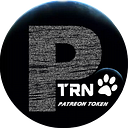Token Migrations: From Renting to Owning
When a token project switches from one blockchain to another, its tokens must be transferred to the new chain as well. This process is called token migration.
Summary
Many blockchain startups generated cash by releasing tokens on the Ethereum blockchain and other third-party smart contract platforms during the 2017 ICO boom.
Some of these projects later built their own blockchains, requiring investors’ tokens to be transferred from the third-party platform to their own chains. This process is referred to as token migration.
Contents
- What Is a Token Migration?
- Why Do Projects Conduct Blockchain Migrations?
- Notable Examples of Blockchain Migrations
- How to Prepare for a Coin or Token Migration
What Is a Token Migration?
Often, blockchain projects start out as little more than whitepapers that promise groundbreaking new technology in the future. The path from design paper to finished product can be long and winding, and projects might make significant changes along the road, such as switching to a new blockchain.
Investors may be required to engage in a cryptocurrency or token migration in the following instances. The operation, also known as a token swap, involves transferring a token holder’s balance from one blockchain to another.
>>The Best Bitcoin and Cryptocurrency Exchange Guide<<
Why Do Projects Conduct Blockchain Migrations?
After the peak of the Initial Coin Offering (ICO) boom in 2017, token migrations became more regular in 2018. An initial coin offering (ICO) is a method of raising funds in which a project develops a token that can be purchased by those who want to invest in the project’s future technology, which is often described in a whitepaper.
In 2018, the majority of projects that held initial coin offerings (ICOs) used Ethereum’s blockchain and ERC-20 tokens.
Some of these initiatives promised that the tokens investors bought would be used in their future technologies, such as the blockchains they planned to create.
As a result, when projects decided to build their own blockchains, they needed the means to transfer investor tokens from Ethereum to their own chains. This is similar to relocating from a rented home to a home that you intend to buy in the long run. This is where the token migration comes in.
>>Cryptocurrency Trading Guide for Beginners<<
Notable Examples of Blockchain Migrations
Tron, EOSIO, Crypto.com, Golem, and Aeternity are among the notable projects that have completed migrations from Ethereum to their own private chains.
Token swaps can also happen when a project migrates from a third-party smart contract platform to its own blockchain. In 2018, Ontology, which started out as a NEP-5 token on the Neo platform, moved to its own network.
Finally, token migrations between two separate third-party blockchains are possible. Kin, for example, began migrating its ERC-20 Kin token from Ethereum to the Solana blockchain in 2020.
Some experts predict an increase in migrations from Ethereum to other smart contract platforms such as Solana, EOSIO, Cardano, Polkadot, NEM, and others as the smart contract platform landscape becomes increasingly diverse — and smart contract platforms continue to compete on cost, features, and more.
>>Bitcoin Wallet Guide, Reviews and Comparison<<
How to Prepare for a Coin or Token Migration
The method for moving tokens differs depending on the project. You may be forced to initiate the migration yourself if you self-custody your tokens.
However, this does not always imply that you must comprehend the intricacies of code. Most projects build tools that connect to your crypto wallet and allow you to migrate your tokens in a matter of seconds.
Other projects have already collected pictures of all token holders’ balances on a specific date and issued new tokens on the new chain in accordance, with little or no active engagement required from the users eligible for the distribution.
If you retain your tokens on an exchange, the exchange is likely to handle the token migration process for you, especially if the exchange is a significant, well-known player in the space. However, because this isn’t always the case, you should double-check with both the migration project and your exchange to ensure that the exchange is taking part in the transfer.
Furthermore, some projects incorporate token migration cut-off dates, which means you won’t be able to transfer your tokens after a specific date, thereby rendering old tokens worthless after the cut-off date. To keep informed, make sure to subscribe to project updates.
